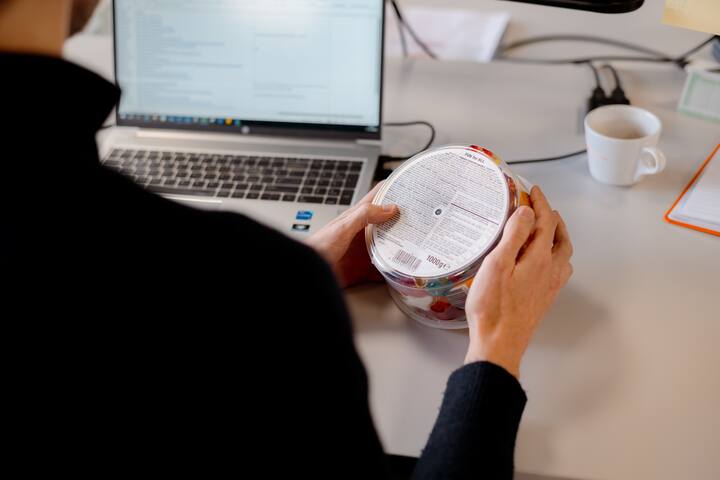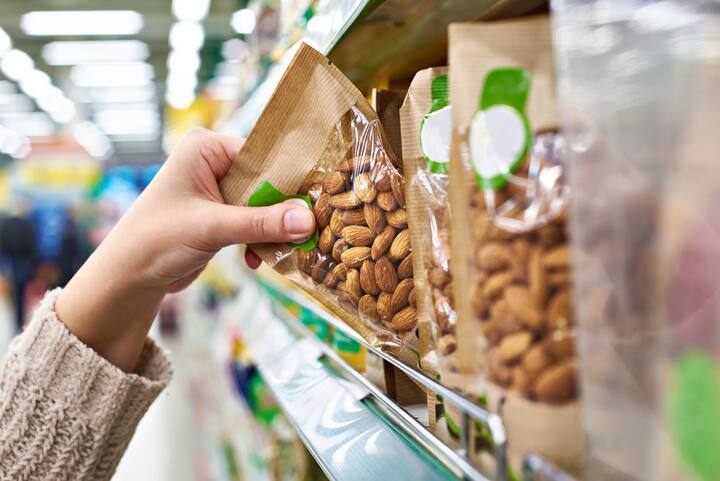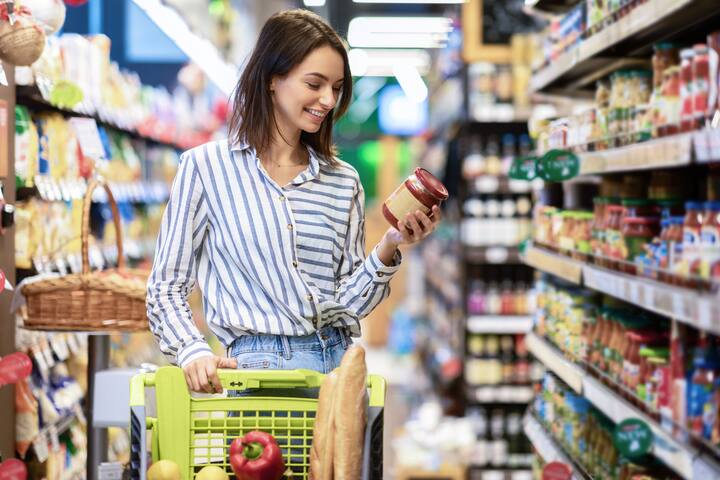
Nutritional value chart: here's what to look out for
January 27, 2022
Nutritional value chart: here's what to look out for
The nutrition table on packaging helps consumers make an informed choice. However, a nutrition table regularly contains inaccuracies. Read what to look out for and how to arrive at the correct nutritional value.
Nutrition table in brief
We help you calculate the correct nutritional value
Comply with legal obligations
Also for products sold in other countries
Have your label information compiled or checked
Introduction of regulation (EU) No 1169/2011
Until a few years ago, it was only mandatory to include a nutrition declaration on a pre-packaged food if a nutrition or health claim was used. With the introduction of Regulation (EU) No 1169/2011, the nutrition declaration has become a mandatory element for all pre-packaged foods, with the exception of foods listed in Annex V of the regulation and beverages containing more than 1.2% alcohol by volume. For the latter category, the alcoholic beverage industry presented a self-regulatory proposal to the Health and Food Safety Commissioner in March 2018. The proposal aims to make information available to consumers of alcoholic beverages regarding nutritional values and ingredients by the end of 2022.
What should and should not be in the nutrition table?
The nutritional value refers to the food as sold. It is permitted to state the nutritional value after preparation, but then a sufficiently detailed preparation method must be stated on the product packaging. The mandatory and voluntary statements can be found in the nutrition table. It is not allowed to mention nutrients other than those listed in the table, e.g. cholesterol or trans fatty acids.
The table format is mandatory. In case of insufficient space on the label, the data may also be placed consecutively instead of in table format. The font size should be at least 1.2 mm.
Vitamins and minerals in the nutrition table
Vitamins and minerals may only be declared if they are present in significant amounts. These are listed in Annex XIII Part A point 2 of the regulation. Here, the percentage of the daily reference intake (%DRI) shall be indicated next to the content in µg or mg.
Reference intake
For the remaining nutrients, the reference intake (RI) in % may also be indicated. To determine this percentage, reference intakes have been established for an average adult. These are indicated in Annex XIII part B of the regulation. If the RI is indicated next to the content in g/100g or g/100ml, the following sentence should always appear below the table: Reference intake of an average adult (8400 kJ/ 2000 kcal).
Portion declaration in nutrition table
In many cases it is desirable to indicate the nutritional value per portion as well. Only this is not instead of, but in addition to the nutritional value per 100 g or 100 ml. In addition, the portion should be quantified and the number of servings present in the pack should be indicated. For example: a 250g pack contains 5 servings of 50g.
Repetition of nutritional values
Repetition of nutritional values in the main field of vision, usually on the front of the package, and in another form is permitted. Only a number of conditions apply to this. For instance, there must be no arbitrariness of the nutrients being repeated. You have to choose between only energy or the combination of energy, fats, saturated fatty acids, sugars and salt. The repetition may be either per 100 g/100 ml or per serving. If it is per serving, the energy value should also be expressed per 100 g/100 ml.
How is the nutritional value determined?
The nutritional value to appear in the nutrition table can be determined in a number of ways:
Analysis of the food by a laboratory.
Nutritional value calculation based on known or effectively average values of the processed ingredients.
Nutritional value calculation using generally established and accepted data, e.g. the NEVO table.
Calculation of the amount of salt is based on the formula: salt= sodium x 2.5. Here, sodium is the amount of sodium naturally present plus the sodium present from ingredients. The energy value is calculated using the conversion factors listed in Annex XIV of Regulation (EU) No 1169/2011.
To calculate the values for the nutrition table, do you use Excel? You calculate the nutritional values for recipes, product specifications and labels even easier and faster with the online software module Specifications. Enter the nutritional values of raw material specifications and the software does the rest. As a producer, you are responsible for the accuracy of the information on the packaging. So if in doubt about a calculated value: test it using a Nutritional Analysis.
Deviations in nutrition table
Due to natural fluctuations, the product will never contain exactly the nutrient content as stated. The stated contents should just not deviate so much that consumers could be misled. A guidance document has therefore been prepared for competent authorities on how to set tolerances for nutritional values declared on a label. This is the ‘Guidance for competent authorities for the purpose of monitoring compliance with EU legislation on Regulation (EU) No 1169/2011 with regard to setting tolerances for nutritional values declared on a label’. In practice, this means that upward and downward tolerances are allowed. However, if a claim is made, the requirement of that claim will have to be met. In the case of vitamins and minerals, at least the significant amount will have to be present. Table 4 of the guidance also provides guidance on rounding of nutritional values.
We help you with every issue
Creating a label and calculating the correct nutritional value is often a complex task. Our labelling specialists prepare label information including nutritional values for numerous products every day and know exactly what to look out for. Also when it comes to the rules in other countries. They will be happy to help you, so that you can be sure of complying with laws and regulations. Contact us.
Author: Krista Baar Senior Labelling Specialist
Related articles

21 Apr 2024
6 tips for translating labels

18 May 2025
Specification management: what does it involve?
More about Normec

Normec Foodlab
Woerden Netherlands

Normec Label & Specifications
's-Hertogenbosch Netherlands